Introduction
In my shop I have a large selection of Turkmen jewelry, so I thought it might be interesting to learn a bit about the Turkmen, comprised of over two dozen tribal groups with a common pastoral nomadic history.
Meet the People
The people lived in encampments, raised horses and livestock, and were known to be occasional plunderers of slaves and ill-gotten gains in between the two or three times migrations to find new pastures to food their animals. The first mention of the term Turkmen was in the 9th century in written sources and by the 11th century, they had migrated as far West as Anatolia, Syria, and Iran as well as Turkmenistan. They resisted any attempts by neighboring countries to be subjugated, and acted as security and transport for long distance caravans.
The Belief System
Most were basically Sunni Muslims, though they retained many of their pre Muslim beliefs and customs which were symbolized in their jewelry. The pieces had deep symbolic meaning and most often marked rites of passage from one stage of life to the next, especially in women as they passed into the child bearing stage of life. From early on, the jewelry’s materials and symbolic shapes and embellishments increased as the girl reached marriageable age, all purporting to guarantee a healthy child. After the first healthy child and proof of fertility, the quantity of jewelry received and worn decreased. In general silver was worn by men, women, and especially children to ward off evil and illness. As such an important part of their lives, the jewelry comprised the wealth of the group, and in times of greatest need, the women sacrificed their jewelry to insure survival of the group.
The Jewelry and Its Symbolism
As the jewelry was made of silver and adorned with touches of gilding and semiprecious stones, carnelian and turquoise, as well as glass imitations, the pieces were often of significant size and weight. The most common symbols found were mountains reflecting the creation story, horns reflecting the sacred mountain ram, plants like the double leaf and two leafed flower, both related to beliefs in the growth of human existence, and animals (especially the mountain ram), which like the mountains are held sacred.
Within the jewelry, the gems hold special meaning. The carnelian is believed to protect the wearer from illness and death, and turquoise symbolizes purity and chastity.
Each piece is not just adornment, but is a monument to the past and to the religion and beliefs of a proud and resilient tribal nation.
Special thanks to the Heilbrunn Timeline of Art History for the above resourced materials. All jewelry shown is available at Spectrum Arts.

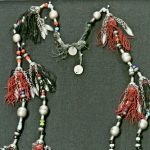
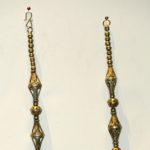
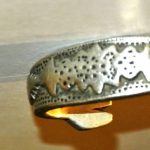
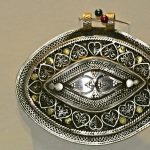
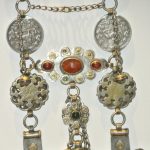
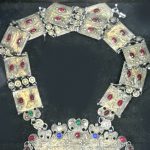
Recent Comments